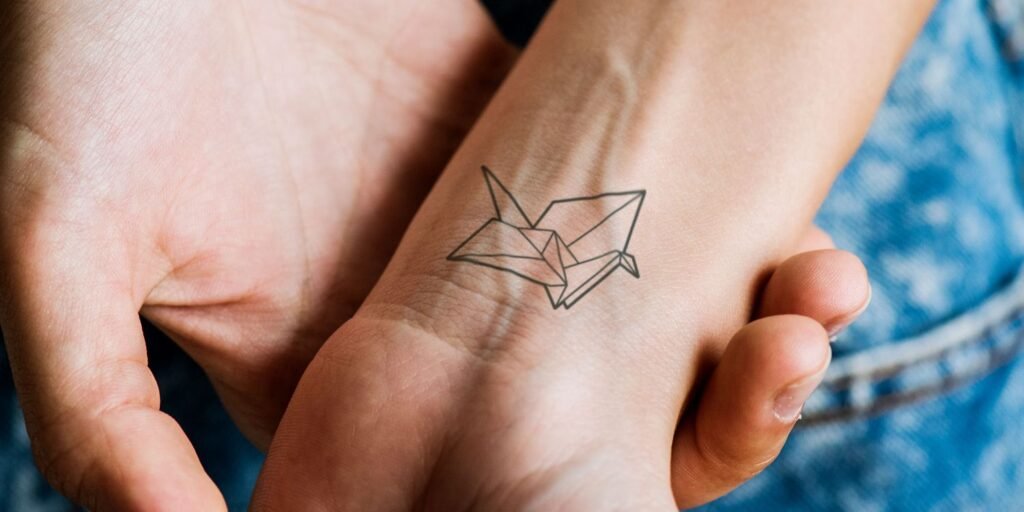You’ve spent forever dreaming of a new tattoo design, figuring out where to put it, and searching for the right tattoo artist to bring your body art to life. Another important step you don’t want to forget? How to care for your new tattoo.
After all, “tattoos are superficial scars,” says Dr. Michelle Henry. “It’s important to prioritize tattoo aftercare to avoid infection and scarring,” she says. It’s also important to make sure your tattoo ink sets properly on your skin and looks its best.
As with any skin wound, the general healing process after getting a new tattoo can take up to several weeks, depending on the immune response to healing the wound and the size of the tattoo. The first two weeks after getting a tattoo are very important for skin care. If the redness does not improve after a few days, or if you notice swelling, bleeding, or bumps, contact your dermatologist immediately. Fortunately, proper tattoo aftercare is easy. A few basics are all you need to keep complexity to a minimum.
keep it covered
As soon as you get your new tattoo, your tattoo artist will cover the area with plastic wrap and leave. “For his first three days of healing, he prefers to use SecondSkin bandages. They are better than bandages or gauze because they are more breathable and allow air to come in while protecting the skin,” says Max.・Mr. Starr says. “The medical-grade adhesive is transparent, so the tattoo can be immediately visible,” he added. Plus, it’s waterproof, so you can take a shower and go about your normal daily life.
wash the tattooed area
You can remove the cover from the third day after getting the tattoo. “I tell my clients to wash the area with a mild cleaning agent like Dr. Bronner’s Pure Castile Liquid Soap,” says Starr. To avoid irritation and potential allergic reactions, “you need to make sure you’re not using products that contain fragrances or active ingredients,” says Dr. Henry. Since you’re essentially treating damaged skin, she adds, “It’s best to keep your skin care products very simple during the healing process.”
Even if you want to keep the affected area clean and germ-free, you don’t have to wash it obsessively. For the first two weeks he only needs to be fed once or twice a day. “Don’t wash your skin too much, or it will dry out,” says Starr. As your tattooed skin heals, “try to avoid immersing yourself in water, whether swimming or bathing,” to reduce the chance of irritation and infection, Starr adds.
moisturizing, moisturizing, moisturizing
Star says to give your newly tattooed skin some extra love by hydrating several times a day to calm redness (a normal part of the healing process) and reduce the chance of scabbing. please. “Using an unscented moisturizer with simple, calming ingredients like ceramides will help soften the scab and make it easier to fall off naturally,” says Dr. Henry.
Even if you moisturize regularly, scabs may form. Although it may be tempting, “don’t pick or peel the scab,” says Starr. Just like a regular wound, it can cause scarring and infection, which can affect the appearance of your tattoo.
Pay attention to SPF protection
Sunscreen plays an important role in tattoo care. To reduce the chance of your tattoo fading, “try to avoid both direct sunlight and submersion in water for the first two weeks,” says Starr. But in reality, staying out of the sun is much more difficult. In that case, you may want to buy loose-fitting sun-protective clothing that covers the entire tattoo.
If that’s not available, put your skin health first. “Chemical sunscreens can burn or sting damaged skin, so wear a mineral sunscreen with an SPF of 30 for daily use and an SPF of 50 if you’ll be outdoors for more than an hour. Wear mineral sunscreen. These are the same guidelines even if you don’t have a tattoo,” says Dr. Henry. Even after the skin has healed, long-term sunscreen is not recommended, as UV rays can cause fading. So if you haven’t been applying sunscreen regularly, apply it (and reapply it throughout the day!) to keep your ink looking its best.
